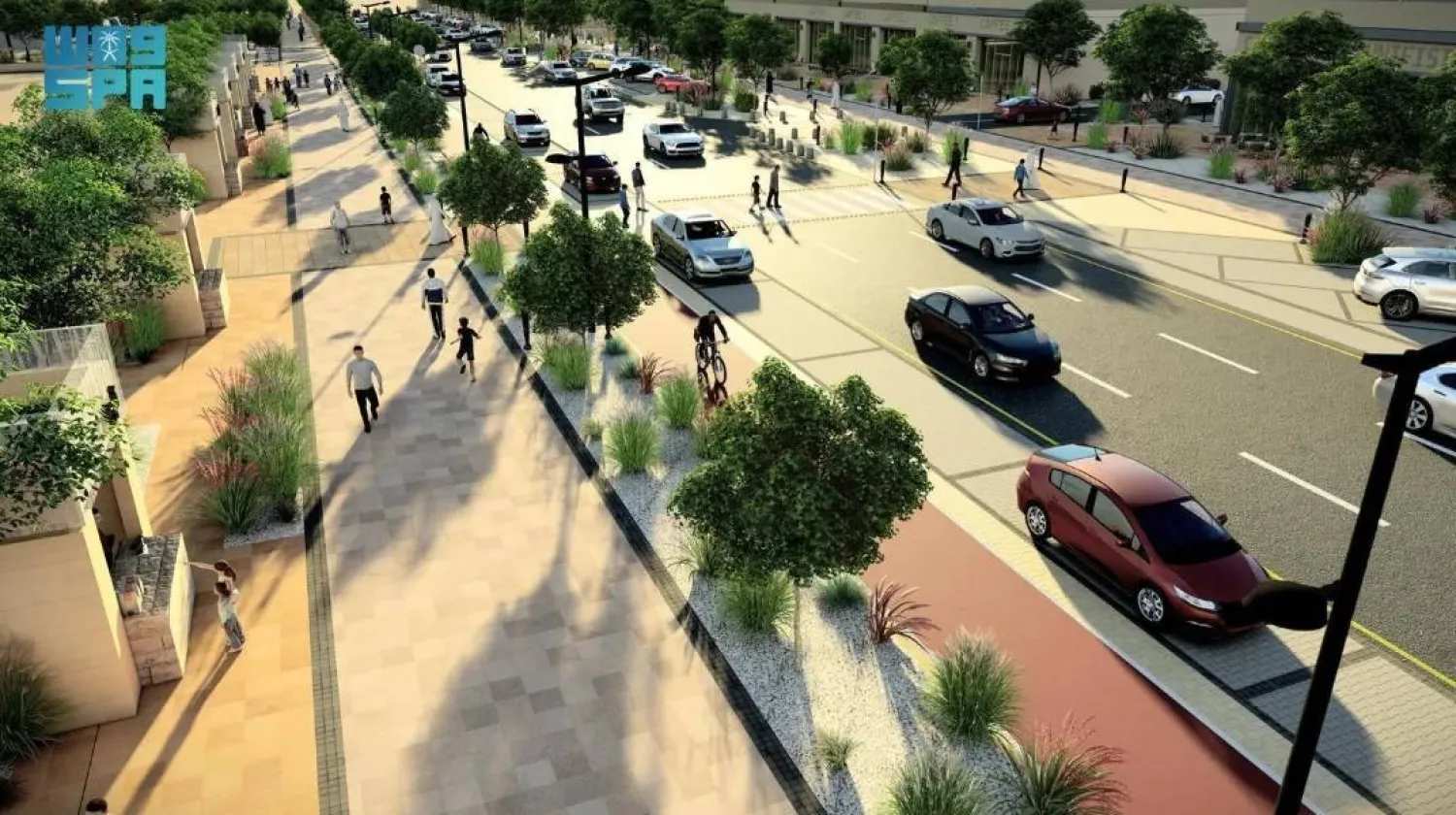Riyadh is set to open the first inclusive cultural yard on Thursday. Planned by the Ministry of Culture, the center will serve as a vital knowledge space that incubates thinkers, creators, and talents. It also features exhibitions, sculptures, and large areas to host cultural and artistic events and transform the creative talents into promising opportunities for unusual ideas and artworks.
Named “Fenaa Alawwal”, the new center will present an exploration destination and a space for cultural dialogue and exchange aimed at building a diverse community of thinkers and creators, as part of the national strategy to empower culture and turn it into a lifestyle, and create opportunities for global, cultural exchange.
The construction works at the Diplomatic Quarter, Riyadh, have turned the first commercial bank in the kingdom (built in 1988) into an artistic and cultural destination for creators from all fields.
The site’s white, cylindrical columns are covered with local, Saudi decorations, while its exterior yard became a stage for artworks and sculptures, topped by a six-piece, permanent collection specially designed for “Fenaa Alawwal”, reflecting the level of creativity and sophistication of many local and international artists.
The site is also characterized with open, flexible corners that will host cultural and artistic events and activities, in addition to a library that provides a wide collection of books and publications in all fields.
The Ministry of Culture released a video that tells the story of the building, which was transformed from a historic, commercial center into a cultural, artistic destination under the sponsorship of the Royal Commission for Riyadh City (RCRC), as part of the Vision 2030’s national transformation program.
The “Fenaa Alawwal” bets on leading the “Third Place” experience in Saudi Arabia by providing an exploration destination, a cultural hub, a platform for knowledge exchange, and a communication bridge that connects art to its pioneers and generations.
Artist Elham Dawsari said that the “Third Place” concept we see in spaces like “Fenaa Alawwal” is crucial because it links artists, interested audiences, officials, and community members in a spontaneous, simple way that encourages and motivates the artist to connect with the community and exchange thought and creative production.
For her part, Artist Miaad al-Akili welcomed the launch of “Fenaa Alawwal”, which gathers creative and artistic works, hoping the new center to be the first of many cultural centers across the kingdom.
Akili said cultural centers play a major role in developing the local landscape, especially when based on innovation, and nurturing the connection of artists with the different generations. She also believes that such centers represent a major, cultural base for a new journey of Saudi arts, and a different generation supported by these exceptional initiatives.
Artist Ali al-Sharif called for incorporating artistic interests such as sculpting and Al Sadu into education, and to start taking care of the talented students in early stages to ensure that the results meet the requirements of the creative phase that Saudi Arabia is living nowadays.
Sharif urged for building a database that features creators and innovators, allows to communicate with them and support their projects.
He added that art has moral and financial values, and the inherited works emphasize a style that helps communities preserve their heritage and creative works throughout history.









